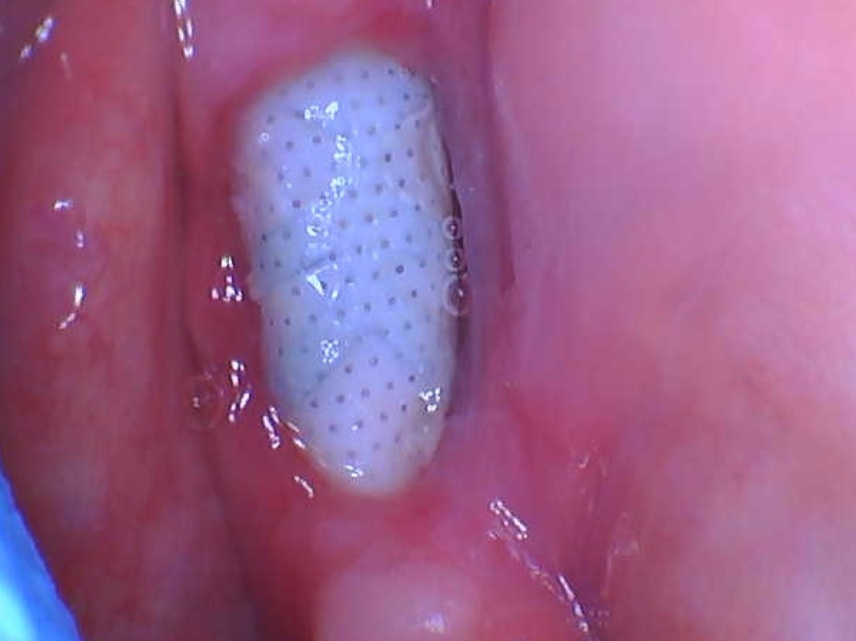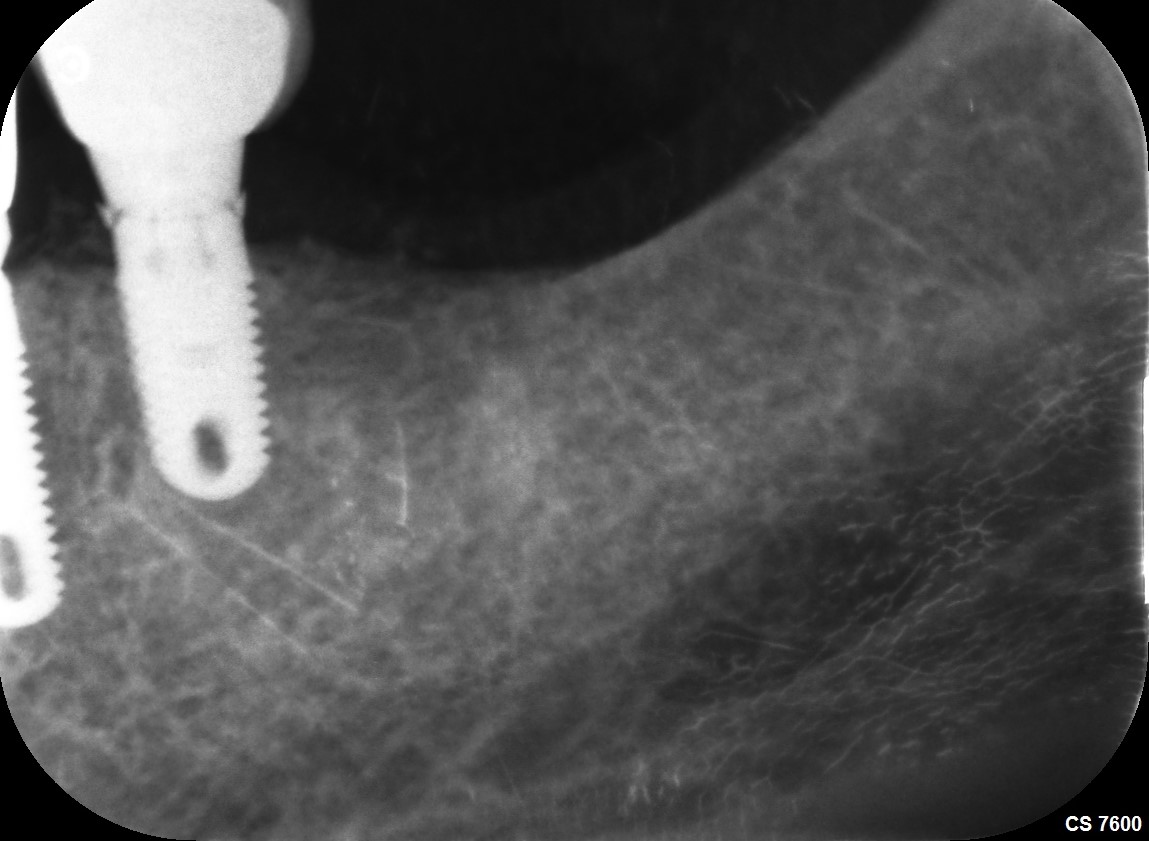Maxillary Overdenture Supported by Alveolar Ridges and Implants: Valid Long-Term Treatment?
Dr. B. asks:
I have seen numerous examples of maxillary overdenture supported by the alveolar ridges and retained by 4 implants with Locator attachments in the second premolar and canine sites. Have there been any long term studies in the literature validating this treatment philosophy? I have heard from some of my colleagues that these work for a few years and then the implants fail because there is too much movement of the overdenture and the bone is too poor in density and quality. What is your experience with this kind of treatment planning?
16 Comments on Maxillary Overdenture Supported by Alveolar Ridges and Implants: Valid Long-Term Treatment?
New comments are currently closed for this post.
Alejandro Berg
4/21/2009
After 15 years of working with implants, I only make bars in the maxillary arch and if possible with 5 not 4 implants. I believe to be true that the bone quality is not good enough for free standing implants with an overdenture.
best of luck
Dr. C
4/21/2009
The use of individual implants for overdenture support is very different for the maxilla and mandible. The concept is well documented with high success rates in the mandible (ie. 2 implants). There is a pausity of data on this concept in the maxilla (mainly case reports). I am suprised how popular the concept is with such little scientific support. One recent study had few patients (5) with short follow up (see below). Although I also see many cases treated with individual implants in the maxilla for overdentures they do not perform as well over time. The implants typically have greater marginal bone loss and often loosen and fail. Most clinicians recommend splinting maxillary implants with a bar for overdenture support. Many patients do well with an upper denture. By the time they feel the need to consider implant options (due to jaw atrophy) there is less bone for implant placement. As the previous posting discussed the bone quality is usually poorer as well. Case selection is critical - a "safer" (although more costly) approach would be to routinely plan for a bar.
Cavallaro JS Jr, Tarnow DP. Unsplinted implants retaining maxillary overdentures with partial palatal coverage: report of 5 consecutive cases. Int J Oral Maxillofac Implants. 2007 Sep-Oct;22(5):808-14.
Ron H-- Prosthodontist
4/21/2009
I certainly agree with Dr C. The Maxilla has many potential problems that can make a combination implant and soft tissue supported removable overdenture a poor treatment choice. As was said, the bone is frequently poor in quantity and quality. If there is sufficient quantity, there is often limited space for a bar,the overdenture teeth and sufficient acrylic thickness,. This often leads to fracture of the overdenture which sometimes can be helped by using a cast metal framework. As stated, a well made complete denture is usually very well tolerated with some limited movement of the prosthesis. If a removable overdenture has no movement during function or parafunction, then the forces to the implants will be similar to a fixed case. This increases the risk for implant failure. If there is movement, then the patient is often disappointed. Failed implants and disappointed patients do not contribute to a successful practice. In the Maxilla, I prefer to add additional implants and do a fixed case even if it means using 6 implants and replacing 10 teeth. I have seen while teaching at the university and have made in my private practice, a number of successful Implant Overdentures. Unfortunately, the results I have found are not predictable and are heavily influenced by patient expectations which are frequently hard to predict.
Once again, as stated, an implant and soft tissue supported removable overdenture in the mandible is an excellent choice. It works well in most cases with 2 free standing implants and Locator attachments.
David Levitt
4/21/2009
The question is what do you want the implants to do? If you have good vestibular depth that prevents lateral movement of the denture, good ridge width for soft tissue support, and an opposing implant retained denture so that occlusal forces are minimized you will have a successful case as I have going on 25 years with o-rings (old cases) and locators (newer cases). In thesse cases all the imlants are doing is helping retain the denture perhaps to make it palateless. If on the other hand you have no lateral support, no soft tissue support, and are opposing natural dentition (especially cuspid to cuspid) then the implants are doomed to overload. That is a case for a tissue bar with more than 4 implants.
Dr. Leonard Schwartz
4/22/2009
I agree with Dr Berg. With 20 years of implant experience I have seen several cases of implant failures with palateless complete upper dentures retained by free standing implants and locator attachments.
The maxillary cases with the implants splinted with a bar however have all been successful. Not a single implant failure. So today for the maxilla, I routinely prescribe a minimum of 4 implants and try to splint all 4 together with a bar and incorporate retentive elements into the bar or at least splint the 2 implants on each side of the midline.
I might add that I also have a good number of successful cases with free standing implants over many years with removable partial dentures. This is a nice way to avoid using the natural teeth for retention of the partials.
Mandibular overdenture cases are highly predictable without splinting.
Ken Clifford, DDS
4/23/2009
Using mini implants and o-ring retention for a palateless upper denture has not been very successful for me. Some cases OK now for two years, but a much higher failure rate for maxilla compared to mandible. Several dentists around the United States are now cementing either a porcelain/metal roundhouse bridge or an acrylic/denture tooth bridge with no tissue support and space under allowed for hygiene with success. I have one case (I know, not scientific, but interesting) where I placed seven minis in very poor bone for transitional use and the patient had to undergo hip replacement therapy before we could continue. I used temp cement, and was able to remove the palateless "fixed acrylic bridge" and observe the implants under the "cementable denture" for over a year. No further bone loss, soft tissue in good condition, and ALL implants still secure. Splinting, however you do it, is essential in the maxilla.
Dr. Ernest Lau
4/24/2009
How much vertical space do you need for an implant supported bar overdenture? I have read that you need a minimum of 15mm for the bar and sufficient overlying acrylic for strength. That's usually more than is available unless you perform an alveoplasty to create the space. What options do I have if the patient has only 10mm of vertical available?
Richard Hughes DDS, FAAID
4/25/2009
Dr Lau, You could a bar with ERA's and Hader clips. There are low profile. Consult with a good and experienced implant prostho lab. These people usually have some good answers. On this point, and this is not directed at you but, in general most of us docs do not receive enough implant prostho training. We learn about all kinds of surgery, but the hard work starts with the prosthetics.
William
5/2/2009
Unless you have a good number of implants, having the denture fully tissue borne will improve your success rate dramatically.
Nardeen
5/5/2009
I have done two cases with 5 implants in the maxilla and telescopic crowns and a metal frame work.. one of them is more than a year now without any problems and extreme patient comfort. but unfortunatly i have not find any litrature regarding this treatment. only case reports. here and there.!!!!!
dr. p
5/5/2009
4 implants is acceptable.
Cross palatal stabilization with a metal framework is important. The palate does not resorb. The frame should extend anteriorly and posteriorly beyond the position of the implants. Don't use a narrow AP bar that transects the AP spread. This would create a fulcrum between the implants.
The implants and locators should have the same emergence height (fox plane lays flat across the arch).
Hugh Hughston, DDS
5/15/2009
I need suggestions in the trweatment planing for a maxillary overdenture/partial with both left and right natural second molars in place. No other teeth are present.
Richard Hughes DDS, FAAID
5/16/2009
Hugh, I have treated several cases like this. Some, I extracted and some I kept the teeth. Keep the teeth if you can. They should meet the following criteria: level curve of spee, carries free, periodontal disease free. These teeth will give you a reliable occlusal stop and the patient will have proprioception. At the mininimum place rootform or blades in the cuspid area and hopefully the first bicuspid area. Depending un the ethenic makeup and sex of the patient the max anteriors have good or bad bone. Asian females usually have poor bone in the max ant region and severe bimax protrusion with a low interincisal angle and mostlikely cannot maintain endosseous implants. With all this said, you can even place a cemented bar over the natural abutments and the implant abutments and have a nice bar retained OD case. You can also expand the bone in the premaxilla and place rootforms. You can alot of viable treatment options, even a Max sub with root forms in the 1st bi and cuspid area would kive you a great case that will last a long time.
juan
6/6/2009
what about a fixed acrilyc bridge supported by 4 implants ? used as a permanet restoration
i need feedback on this situation.
Dentist Thornhill
9/15/2009
4 dental implants are the minimum. I usually prescribe a minimum of 4 implants and try to splint all with bars.
Dr Kershaw
11/2/2009
Has anyone tried 2 implants and locators on a CUD? What were the results like?
















